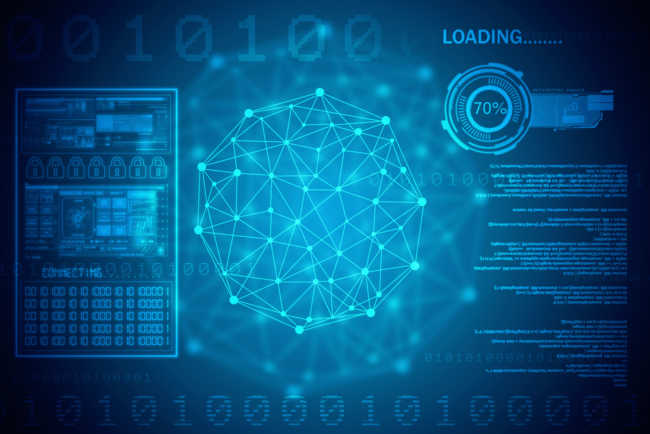Who owns the Machine Generated Data in IoT – Men or Machine?
The data which is acquired by sensors is essentially Machine Generated Data (MGD). This post will dwell on the subject of data ownership of MGD as follows:
- Sensors (Data Acquisition and Communication)
- Machine Generated Data
- The Lifecycle of the MGD and the Ownership Paradigm
- Who should be the owner of the MGD?
In the IoT ecosystem, the physical computing frontier is managed by the sensors. Sensors mostly include three fundamental functions:
- The act of sensing and acquiring the data
- Communication of the data through appropriate protocols to communicate their readings to Internet cloud services for further aggregation and trend analysis
- Power supply energizes the activity.
The additional functions would include processing/system management and user interface.
What is Data Generated by IOT devices
The Digital Computing part comprises the IoT application. This is determined by the types of sensors, cloud connectivity, power sources, and (optionally) user interface used in an IoT sensor device. The following diagram showcases the primacy of sensors in a typical IoT Ecosystem.
When making physical measurements such as temperature, strain, or pressure, we need a sensor to convert the physical properties into an electrical signal, usually voltage. Then, the signal must be converted to the proper amplitude and filtered for noise before being digitized, displayed, stored, or used to make a decision. Data-acquisition systems use ADCs (analog-to-digital converters) to digitize the signals with adequate signal conditioning.
Sensor data communication to the cloud can be done in multiple ways from wireline to wireless communication of various complexities. While wire line communication has some important benefits (such as reliability, privacy, and power delivery over the same wires), wireless communication is the technology that is the key catalyst in the majority of IoT applications that were not previously practical with wired systems. Reliability, channel security, long range, low power consumption, ease of use, and low cost are now reaching new levels, previously thought infeasible.
Examples of Data Generated by IOT devices
Some examples of recently popular IoT wireless communication types: Wi-Fi, Bluetooth Low Energy (aka Smart), Zigbee (and other mesh 802.15.4 variants), cellular, LPWA (Low-Power, Wide-Area network options: Ingenu, LoRaWAN, Sigfox, NB-LTE, Weightless), and Iridium satellite. More about NB-IoT Usecases: How NB-IoT will Impact the Future of smart cities, buildings and consumers.
Machine Generated Data (MGD)
Sensor data is the integral component of the increasing reality of the Internet of Things (IoT) environment. With IpV6, anything can be outfitted with a unique IP address with the capacity to transfer data over a network. Sensor data is essentially Machine Generated Data. MGD is that is produced entirely by devices/machines through an event or observation.
Here we would define human-generated data, what is recorded is the direct result of human choices. Examples are buying on the web, making an inquiry, filling in a form, making payments with corresponding updates on a database. We would not consider the ownership of this data in the post and would be limiting our post to MGD.
The journey of the MCD and the Ownership Paradigm
The different phases exist in the typical journey of Machine Generated Data.
- Capture and Acquisition of Data – This is a machine or a device based function through signal reception.
- Processing and Synthesis of the Data – This is a function which ensures enrichment and integration of Data
- Publication of the Data – This is done by expert systems and analysts who work on exception management, triggers, and trends.
- Usage of Data – The action which needs to be taken on the processed and reported information is used by the end user.
- Archival and Purging of Data – This function is essentially done by the data maintenance team with supervision.
Now let us dwell on the Ownership Paradigms. They range from the origination of data, adding value to the data through a make over, monetizing of data through insights generated. Interestingly, let us explore if there is any conclusive method for determining how ownership should be assigned. Some players may be involved in the journey of the data (e.g., the user, hardware manufacturer, application developer, provider of database architecture and the purchaser of data, each having an equal lay of the claim in different stages of this journey )
Who should be the owner of MGD
Let me share the multiple and conflicting views. The owner of the device which records Data. In essence, the owner of machine-generated data(MGD), is the entity who holds title to the device that records the data. In other words, the entity that owns the IoT device also owns the data produced by that device.
But there could be a lack of clarity if the device is leased rather than owned. When real-world constructs such as lease holdings of (say servers) come into play, it indeed gets complex and even murky.
- The owner is the user of the Data: The other dimension is data may be owned by one party and controlled by another. Possession of data does not necessarily equate to title. Through possession there is control. The title is ownership. Referred to as usage rights, each time data sets are copied, recopied and transmitted, control of the data follows it. There could be cases where the owner of the device could be the user of the data.
- The maker of the Database who essentially invests in aggregating, processing and making the data usable is the owner of the Data: This has some buyers of this paradigm. The owner of a smart thermostat does not, for example, own the data about how he uses it. The only thing that is ‘ownable’ is an aggregation or collection of such data provided there has been a relevant investment in carrying out that aggregation or collection (the individual user is very unlikely to have made that investment). The owner here could be the Home automation company. The value which could be generated through this investment could be producing market intelligence, exploiting the insights from data to build market presence and differentiation.
- The purchaser of Data could be the owner of the Data: An auto insurance company could buy the vehicle generated data ( from the makers of automobiles ) and could design a product for targeted offerings to specific market segments based on said driving behavior patterns and demographics.This may not be as easy as this seems – refer the URL: http://joebarkai.com/who-owns-car-data/ which states that the owner of the vehicle and not the maker of the car owns the data collected from the electronic data recorder.
- The value chain of who owns the data can be a complex one with multiple claimants. As one aggregates more sources, it just gets more complicated. A good example is in the making of smart cities. The sources of data can be from multiple layers and operational areas. City authorities would be making an effort to make use of the data in areas of waste management, traffic congestion, air pollution, etc. So does the city authority own the data?
Conclusions on Data Generated by IOT devices
My take is if someone in the MGD value chain is making the data used for a larger good, and in the process may monetize the data to cover the investments, that entity deserves to be the owner of the data as that is where the value is generated.
FAQs about Data Generated by IOT devices
What is data source in IoT?
In IoT, a data source refers to the origin or point of generation of information. It could be sensors, devices, or systems that produce data, capturing various parameters such as temperature, humidity, motion, or other relevant information.
What data is generated from IoT devices?
IoT devices generate a wide range of data depending on their sensors and functions. This may include environmental data like temperature and humidity, motion data, location data, and other specific information relevant to the device’s purpose, such as health metrics in a wearable device.
What data is collected in IoT?
IoT systems collect diverse data sets, encompassing real-time sensor readings, environmental conditions, user interactions, and operational statuses. This data is often analyzed for insights, used in decision-making, and can be crucial for monitoring and optimizing IoT device performance.
Do IoT devices transmit data?
Yes, IoT devices frequently transmit data. They send information to centralized servers, cloud platforms, or other connected devices. This data transmission enables real-time monitoring, remote control, and the aggregation of information for further analysis and decision-making.
 This article was written by Somjit Amrit, Head of IoT & Data Analytics Business Unit at Opterna-AM, and originally was published here. Over the last 25 years, Somjit Amrit has been fortunate to be an integral part of teams which have incubated business across a wide spectrum of industries namely IT & BPM Services, and Internet of Things (IoT) and Analytics. He has been successful in conceptualizing business opportunities and scaling them into self-sustained businesses.
This article was written by Somjit Amrit, Head of IoT & Data Analytics Business Unit at Opterna-AM, and originally was published here. Over the last 25 years, Somjit Amrit has been fortunate to be an integral part of teams which have incubated business across a wide spectrum of industries namely IT & BPM Services, and Internet of Things (IoT) and Analytics. He has been successful in conceptualizing business opportunities and scaling them into self-sustained businesses.
